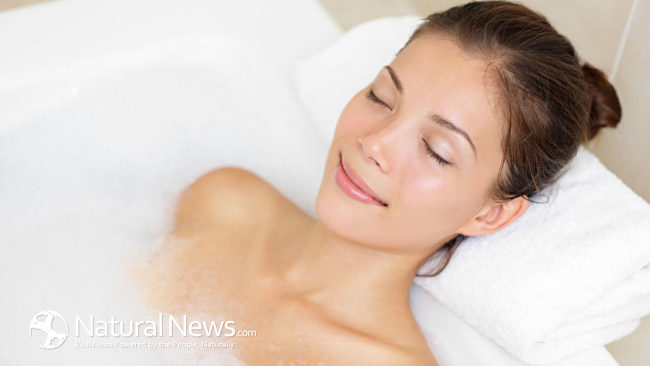Warning: creating beauty recipes with herbs is highly addictive and fun. You have been forewarned.
When you start experimenting with green beauty recipes, you might find that your bathroom and kitchen convert into an apothecary.
Cabinets and shelves that were once allotted to synthetic drugstore brands become filled with jars, tinctures, powders, essential oils, and various plant life. Suddenly you realize that this incredible array of biodiverse choices makes so much more sense to use on your skin than traditional pharmacy or department store brands. In fact, it looks and feels like skin food—which, naturally, it is.
The skin is the body’s largest organ of the integumentary system—the body’s protection from various kinds of damage, such as water loss or abrasion from outside. With millions of tiny pores, it also absorbs 60% of what’s on it.
That means any chemicals or substances on the surface of the skin will enter the organs in the rest of the body as well. We find a perfect example of this in the use of nicotine and birth control patches that adhere to the skin and work through absorption.
Women load their bodies with an average of 515 chemicals a day, as seen in this very clear chart. That’s a number derived from the cosmetics and body lotions that a woman typically uses—lipstick, foundation, blush, deodorant, plus hair and body products.
With so many chemicals going in, people interested in lightening their toxic load would want to start by detoxifying their basic bath and body products.
Herbs offer a natural and effective way to address healthy skin and body care from the inside and out. They have been used therapeutically for thousands of years and then some.
They compose the foundation of most of our medicines, treatments, and products; however, most formulas used by large companies have been denatured and diluted.
Similarly, herbs used in generic skin care products are no longer found in their original, highly therapeutic forms. In fact, they may have been replaced by synthetic versions or may be heavily diluted by fillers, binders, and toxic preservatives. Their use can lead to complications like skin sensitivities or worse—some have even been shown to cause cancer.
Learning to harness herbs for skin care may take a bit of time and research. Ultimately, the long-term results are worth it.
Some of my favorite herbs to start incorporating into your home apothecary include: aloe, green tea, witch hazel, chamomile, comfrey, calendula, nettles, red raspberry, rose, lavender, and rosemary. And there are so many more! Most likely, you already have some in your house.
The fun is in exploring what works for your skin, immersing yourself in the different exotic scents and textures, and combining your own formulas. You may be standing in your lavatory, but you just embarked on a vast adventure. Welcome to the world of herbal skin care!
In my next post, I’ll be adding some awesome DIY recipes with herbs to get your skin glowing.
Sarita Coren is a freelance writer and blogger at Peace on the Skin & Peace Within,www.ediblefacial.com. She is committed to spreading the word about green beauty, holistic wellness, and living from the heart. She can be contacted at [email protected].





